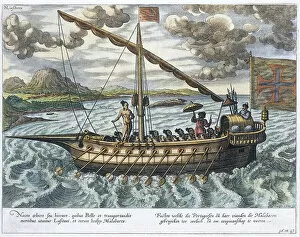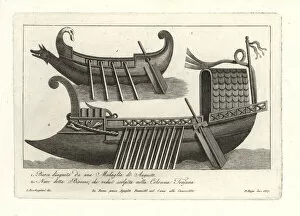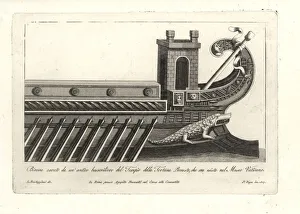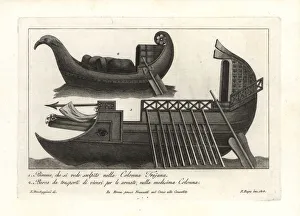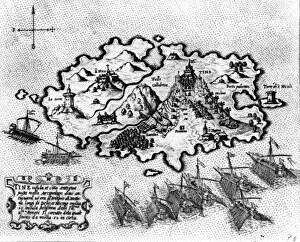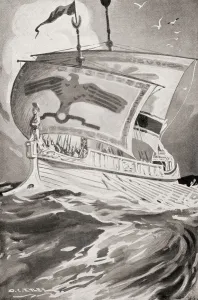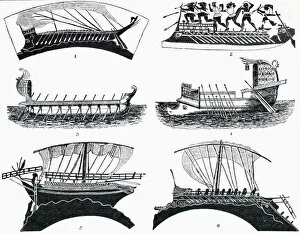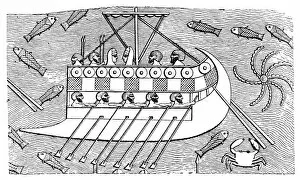Bireme Collection
The bireme, an ancient Roman ship, was a formidable vessel that played a significant role in naval warfare
All Professionally Made to Order for Quick Shipping
The bireme, an ancient Roman ship, was a formidable vessel that played a significant role in naval warfare. Dating back to Ancient Rome, this double-decked warship was equipped with two rows of oars on each side, allowing for swift and agile maneuvering on the seas. The Fusta illustration by Jan Huyghen van Linschoten showcases the intricate design of these Roman ships. One notable feature of the bireme is its stern adorned with a crocodile, symbolizing power and strength. This detail can be seen in various depictions such as Trajan's Column engraving and historical maps like the one depicting the Venetian fleet off Tinos Island. These warships were not only used for battles but also served as transport vessels. Known as Imperial Galleys, they were instrumental in expanding the Roman Empire's influence across vast territories. Naval battles between biremes were fierce encounters where skilled rowers propelled these mighty ships forward into combat. One such battle depicted in an editorial image shows their dominance at sea. The Book of Ships from around 1920 provides valuable insights into ancient maritime history, featuring illustrations of Greek and Roman ships including biremes and uniremes. These vessels sailed through the Mediterranean waters during different eras, showcasing advancements in shipbuilding techniques over time. A significant victory achieved by Romans using biremes occurred at Mylae in 260 BC when they defeated Carthaginians. This triumph further solidified their naval supremacy during that period.


